
The grey dagger is a moth of the family Noctuidae.
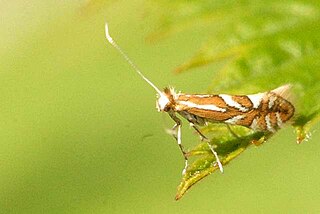
Phyllonorycter oxyacanthae is a moth of the family Gracillariidae found in all of Europe except the Balkan Peninsula. It was described by the German-born Swiss entomologist, Heinrich Frey in 1856. The larvae are known as leaf miners, living inside the leaves of their food plants.

Coleophora anatipennella is a moth of the case-bearer family (Coleophoridae).
Stigmella oxyacanthella is a moth of the family Nepticulidae, found in Europe and North America. The larvae are leaf miners feeding inside the leaves of trees and shrubs, such as hawthorn, apple and pear.

Leucoptera malifoliella, the pear leaf blister moth, ribbed apple leaf miner or apple leaf miner, is a moth of the Lyonetiidae family that can be found in all of Europe.
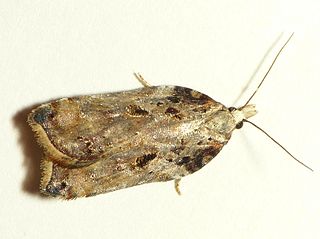
Acleris cristana, the rufous-margined button moth, is a moth of the family Tortricidae and is found from Europe through the Caucasus and Ussuri to Japan.

Phyllonorycter blancardella, the spotted tentiform leafminer, is a moth of the family Gracillariidae. It is known from all of Europe, east to Ukraine and central Anatolia. It is also known throughout North America including Nova Scotia, Quebec, Ontario, Wisconsin and California.

Phyllonorycter cerasicolella is a moth of the family Gracillariidae. It is known from all of Europe, except northern Scandinavia.
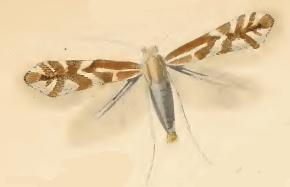
Phyllonorycter viminetorum is a moth of the family Gracillariidae. It is found from Latvia to the Pyrenees and Italy and from Ireland to Ukraine.
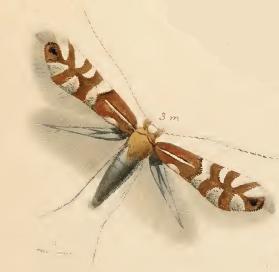
Phyllonorycter ulmifoliella is a moth of the family Gracillariidae. It is found in all of Europe, east to Russia and Japan.
Phyllonorycter turanica is a moth of the family Gracillariidae. It is known from Afghanistan, North Macedonia, Armenia, Iran, Azerbaijan, Georgia, Kazakhstan, Kyrgyzstan, the Caucasus, Tajikistan, Turkmenistan and Uzbekistan.

Phyllonorycter mespilella is a moth of the family Gracillariidae. It is found from Germany to the Iberian Peninsula, Sardinia, Italy and the Carpathian Mountains and from Ireland to southern Russia. It also occurs over much of western North America, from California north to British Columbia, and east to Utah and New Mexico.

Phyllonorycter sorbi is a moth of the family Gracillariidae. It is known from all of Europe, except the Balkan Peninsula.

Phyllonorycter spinicolella, also known as the sloe midget, is a moth of the family Gracillariidae, first described by the German entomologist Philipp Christoph Zeller in 1846. It is probably present in all of Europe.

Phyllonorycter crataegella, the apple blotch leafminer, is a moth of the family Gracillariidae. It is known from Canada the United States.
Phyllonorycter malella, the apple tentiform leafminer, is a moth of the family Gracillariidae. It is known from Kazakhstan, Kyrgyzstan, Russia (Altai), Tajikistan, Turkmenistan and Uzbekistan.
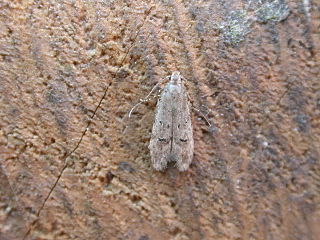
Teleiodes vulgella is a moth of the family Gelechiidae. It is known from most of Europe, east to the southern Ural and the Volga region.

Coleophora siccifolia is a moth of the family Coleophoridae. It is found in most of Europe.
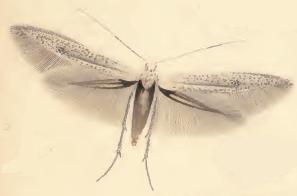
Coleophora hemerobiella, the fruit tree case moth is a moth of the family Coleophoridae, found in western Europe.

Bucculatrix bechsteinella is a moth of the family Bucculatricidae. It was described by Johann Matthäus Bechstein and Georg Ludwig Scharfenberg in 1805. It is found in most of Europe, except Greece and Bulgaria.













